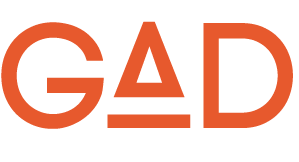Douglas William Hume
Northern Kentucky University
March 7, 2017
In the fall 2016 semester I was scheduled to teach an upper-division undergraduate course titled “Ethnographic Methods and Research” in which I use McCurdy, Spradley, and Shandy’s The Cultural Experience: Ethnography in Complex Society (2004) to introduce students to qualitative ethnosemantic research methods. It so happened that one of the sociologists in my department left the university last spring who was scheduled to teach a course titled “Qualitative Research Methods”, which had similar student learning objectives as my course. After negotiating with the sociology program coordinator, I was allowed to cross-list the courses, resulting in a mix of 20 sociology students and 10 anthropology students. The plan of the course was to spend the first half of the semester in class discussing research design and practicing data collection methods. The second half of the course involved students conducting their own research project using the methods introduced in the class and meeting with me each week to review their progress and guide them through the methods outlined in our textbook. During the first few one-on-one meetings with students focusing on their progress with grand tour/story/mini-tour/native language check questions and writing field notes, a stark difference between the anthropology and sociology students appeared. The sociology students would ask grand tour and story questions, such as, “What is a typical day like at work?”, “What do you do here at work?”, and “Do you have an interesting story about something that has happened during work?”, but would then move towards specific questions that they had formed on their own about the microculture, such as “How do you feel about customers?”, “What economic changes have you seen over the past year in your job?’, and “What do you think causes people to choose your store?”. While these questions are not “bad” questions to be asking, they do introduce research biases and the students’ reality upon the reality of the informants. In other words, ethnosemantic methods are designed to elicit emic data from informants and then use that emic data to formulate further questions rather than forming etic questions from the perspective of the researcher. I then spend time during our one-on-one meetings with the sociology students explaining how they were imposing their own version of reality upon their informants, the result of which was more a reflection of their own perspectives than their informants. In addition, I explained that by asking these types of questions, they would be excluded from learning new things about the microculture–they would only learn the informants’ perspectives on their own knowledge rather than collecting the knowledge of their informants. The anthropology students, on the other hand, did not formulate questions of their own design, but have instead followed grand tour and story questions by asking mini tour questions based upon the informants previous responses. What I discovered through teaching this cross-listed course was the stark difference between sociology and anthropology: etic and emic foci of interviews and the ability for anthropologists to learn about cultures through serendipity by the design of our interview questions.
Douglas Hume earned his PhD at the University of Connecticut and is currently an Associate Professor at Northern Kentucky University. His research interests include: culture and cognition, ethnoecology, and agriculture. He has recently published “Vary Gasy: Meanings of Rice and Implications for Agricultural Development in Eastern Madagascar” in Etudes Océan Indien (2009), “Malagasy Swidden Agriculture: The Influence of Conservation Organizations on Indigenous Knowledge” in the Kentucky Journal of Anthropology and Sociology (2012), and “Darkness in Academia: Cultural Models of How Anthropologists and Journalists Write About Controversy” in World Cultures eJournal (2016).
